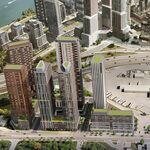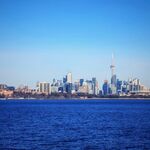Not random. Taking a system that hasn't evolved and has become useless in terms of providing guidance and creating routes that have purpose. More and more there are highways that end in the middle of nowhere because ownership changed, or that were at one time the fastest/shortest route between locations, but haven't been rerouted to take advantage of new roads that have been built. The idea of a long distance highway route should be to guide people to the most efficient route between those two places, not to take people on some nostalgic journey through time and small towns. So many of our highway numbers are stuck in the past, broken by change, and don't represent a goal of guiding people on the best route between two places. Routes should evolve. These are the highways that almost anyone would find themselves on if they are making a long journey in Canada.
North-south highways are odd numbered with 1 in west, and 97 in the east. Where north-south Interstate numbers reach the Canadian border the same number has been continued into Canada to complete their journey.
East-West highways are even numbered, and the Trans Canada has been given 50, the most central number. East-west highways range from 2 against the southern border to 80 in the north, and the primary east-west highways in Canada end in "0".
View attachment 572783
















